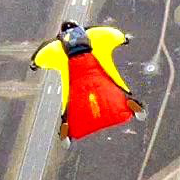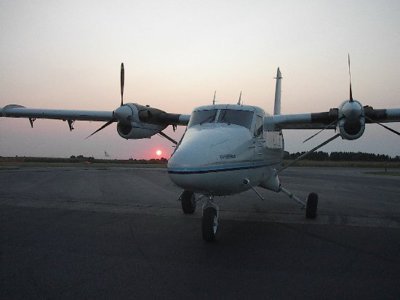Recommended Posts
riggerrob 558
Sitting or kneeling on the floor of our old Beech 18 was a pain until we installed bob-sled benches. When we bought a King Air, we installed bob-sled benches.
When we bought a second King Air, we installed bob-sled benches.
Side benches in Twin Otters make it difficult to tighten both side straps evenly.
"Ominous music" sounds like the first step in a side spin.
By far the best are airplanes large enough (Skyvan, DC-3 and C-130) to allow you to stand on your hind legs - like a gentleman - while attaching students.
Hint, I have done tandems from the following aircraft:
Alouette 2
Beech 18 (2 of the 3 types of door), King Air and Queen Air
Cessna 172, 182, 205, 206 (both types of door), 207, 208, 210 and 421
Douglas C-47 (cargo door version of DC-3)
Dornier 228
Maule
Pilatus Porter
Skyvan
Twin Otter
QuoteHave you seen what the climb rate of a -27 super otter is with 23 jumpers and 1 engine on a hot summer day? It really isn't that much better (where are those really smart pilot types to give the precise data?). This was the reason we often had to fly our otter with 4 jumpers as a "full load" at the air force academy...had to be able to actually maintain a climb rate if an engine went down. Not mention what happens when one engine is lost on a twin a/c...makes things really interesting. With a single engine a/c it may be a glider, but gliders are pretty easy to land.
4 jumpers as a full load? Say what?! Uhh... that's goverment waste for yah.
And so what if a Super Otter doesn't climb faster than a PAC 750 with one engine inoperative. How fast does the 750 climb with one engine inop? Yah... not so great is it?
www.diverdriver.com
ATP/D-19012
FB #4125
LuvToFly 0
QuoteAirworthiness Directives, Service Bulletins, Special Inspections, etc. are a part of the whole FAA Type Certificate and Technical Standard Order, quality control process.
Get used to them.
I defy you to name a parachute manufacturer who has not issued a Service Bulletin.
Aircraft manufacturers who have not issued an AD, SB or SI are rare.
You are missing the point Rob -
1) This AD is emergency in nature. In piloting, that's something that should raise concern
2) The information is being offered through a foreign certification. That is another hop in the step to know the legitimacy of the testing
3) The issue here is wings not being able to support a load. Though one can reduce the payload, you cannot always predict wing loading because of getting into unforeseen situations like wind shear or going through a section of extreme turbulence by underestimating a frontal system's approach velocity.
4) The AD makes it clear that there are defective parts holding the wing on. Rivets that are not able to hold the load they were designed for.
5) In other instances concerning airliners where vertical stabilizers may be suspected of shearing because of bad rivets, all the planes were grounded for inspection. This is common practice, and has not been done in this case according to the data I'm looking at.
If this doesn't raise concern, someone's not paying attention. Been flying for 27 years - and know a thing or two about this.
"The helicopter approaches closer than any other to fulfillment
of mankind's ancient dreams of a magic carpet" - Igor Sikorsky




Share this post
Link to post
Share on other sites